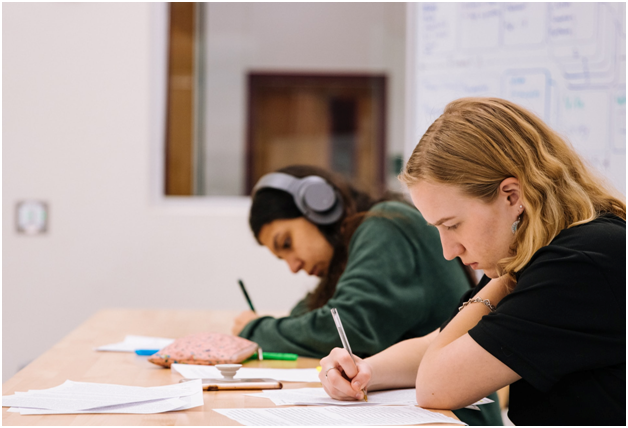Introduction
High school is a crucial phase where students lay the foundation for their future academic and professional endeavors. The development of effective study skills is paramount in ensuring success during these formative years. This article explores key strategies tailored to high school students, aiming to enhance their learning experience and overall academic performance.
1. Establishing a Productive Study Environment
Dedicated Study Space
Create a designated study area free from distractions. This space should be well-lit, organized, and comfortable, promoting a focused and conducive atmosphere for learning.
Optimal Seating Arrangement
Choose a comfortable chair and desk to support good posture. An ergonomic setup can significantly contribute to prolonged study sessions without causing physical discomfort or distraction.
Adequate Lighting
Ensure ample lighting in your study space. Natural light is preferable, but if not available, invest in bright, artificial lighting to reduce eye strain and create an energizing environment.
2. Effective Time Management
Prioritizing Tasks
Develop a daily or weekly schedule to prioritize assignments, projects, and study sessions. Identify high-priority tasks and allocate sufficient time to ensure their completion without last-minute stress.
Time Blocking Techniques
Divide your day into time blocks dedicated to specific subjects or activities. This structured approach helps manage time efficiently and prevents the overwhelming feeling of having too much to accomplish.
Set Realistic Goals
Establish achievable short-term and long-term goals. Break down larger tasks into smaller, more manageable steps, celebrating small victories along the way to maintain motivation.
3. Active Reading Strategies
SQ4R Method
Building upon the SQ3R method, SQ4R includes the additional step of “Review.” After Survey, Question, Read, and Recite, take a few extra minutes to review the material. This reinforcement aids in long-term retention.
Visualization Techniques
Create mental images or diagrams to visualize complex concepts. Associating information with visuals enhances memory recall and understanding, making the learning process more effective.
Teach the Material
Pretend you’re teaching the material to someone else. This method reinforces your understanding of the subject and highlights areas where further clarification may be needed.
4. Note-Taking Excellence
Utilize Various Note-Taking Formats
Experiment with different note-taking methods such as the linear method, concept mapping, or the charting method. Adapt your approach based on the subject matter for optimal comprehension.
Revise and Rewrite
Regularly revisit and revise your notes. Rewriting information in your own words reinforces understanding and aids memory recall during exams or when completing assignments.
Incorporate Colors
Use color-coded notes to categorize information. This visual organization makes it easier to identify key points and relationships between concepts.
5. Harnessing Technology for Learning
Digital Flashcards
Explore digital flashcard apps to create interactive study materials. This modern approach engages visual and kinesthetic learners, offering a dynamic alternative to traditional flashcards.
Online Collaborative Tools
Take advantage of collaborative platforms for group study sessions. Virtual study groups enhance social learning, allowing students to share insights, clarify doubts, and benefit from diverse perspectives.
Educational Podcasts
Integrate educational podcasts into your routine. These auditory resources provide an alternative method of learning, especially beneficial for auditory learners while allowing flexibility in consumption.
Conclusion
As high school students embark on their academic journey, mastering these study skills for high school students will undoubtedly pave the way for success. From creating an optimal study environment to implementing effective time management, refining active reading and note-taking strategies, and leveraging technology, each skill contributes to a holistic approach to learning. By embracing these techniques, students can not only excel academically but also develop lifelong skills that will serve them well in future endeavors.







